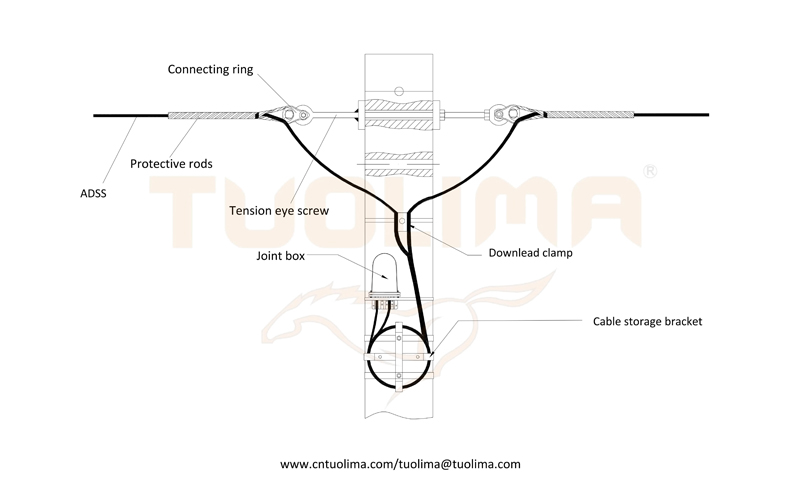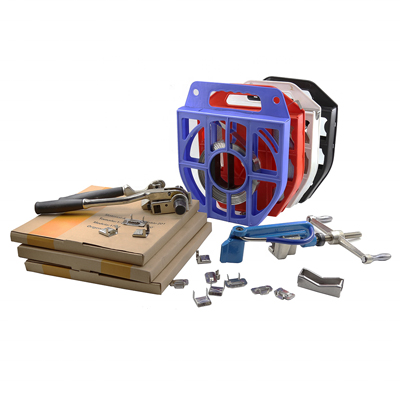For the application of tension clamps on corner towers (generally the corner >25°), it can be divided into three scenarios:
1. At the fiber optic cable joint;
2. Straight-through place of the optical cable;
3. At the end of the fiber optic cable.
This article will explain the installation and description of the fittings in the first scene:

Schematic diagram of installation fittings for ADSS: cable joints
1. Preformed dead-end tension clamp for ADSS cable
Model No.: TLM-P___
Material: Aluminum or galvanized steel

Use: ADSS preformed dead-end tension clamps are mainly used for fixing and anchoring overhead self-supporting ADSS fiber optic cable lines, and are generally installed in terminal towers, tension towers, corner towers, etc.
Composition: inner rods, outer rods, pull/connecting ring. Users can choose different sets according to design requirements.
Features: The holding force of the preformed dead-end tension clamp to the conductor (fiber optic cable) can reach more than 95% of the ultimate tensile strength (R.T.S) of the conductor (fiber optic cable), without the stress influence of concentration and vibration.
Attention:
1) Due to the special structure of the tension clamp, it can only be used once after being stressed, and cannot be reused;
2) The specification and model of the cable must be provided when ordering products;
3) It is not allowed to use any other clamps on the rods, but it is allowed to use others on the front end and back end.
4) The rotation direction of the clamp and the conductor should be consistent. The standard rotation direction is right-handed, if you need a left-handed one, please tell us.
2. Stainless Steel Cable Strap
Model No.: C201/C202/C304
Material: Stainless steel

Use: The downlead cable clamp is mainly used for the fixed installation of ADSS and OPGW optical cables when they are lead on the tower. For example, at the optical cable joint pole (tower), there is a fixing function of the optical cable from the clamp hardware to the installation of the joint box. And the clamp leads the optical cable down and fix from the tower to the underground pipeline, the cable trench, direct burial, and into data room. Prevent the optical cable from being damaged by friction with the tower or other objects under the influence of wind, so as to protect the safety of the optical cable.
3. Cable storage bracket
Model No.: TSB-60x60
Material: Galvanized steel

Use: It is mainly used to wind redundant optical cables on joint towers/poles, and is generally used in conjunction with splice closure. Please tell the sizes before purchase.
Model No.: TJS-902
Material: PP/PC

Uses: Widely used in optical cable joints and junctions of different optical cables, and play a role in protecting optical cable joints.
Features:
1. The splice closure is made of PP or PC, which is suitable for the protection of optical cable joints.
2. There are several specifications of two ports, three ports, four ports, five ports and six ports.
3. With multiple seals, it has good waterproof performance.
4. The structure inside the box is spacious, the fusion splicing tray adopts superposition type, flexible configuration, simple installation, the bending radius of the optical fiber fully meets the international standard, and the bottom of the splice closure is designed with a certain space for the coiling of the remaining optical fiber, and the fiber has no attenuation change in the splice closure.
Related Blog
Related Products